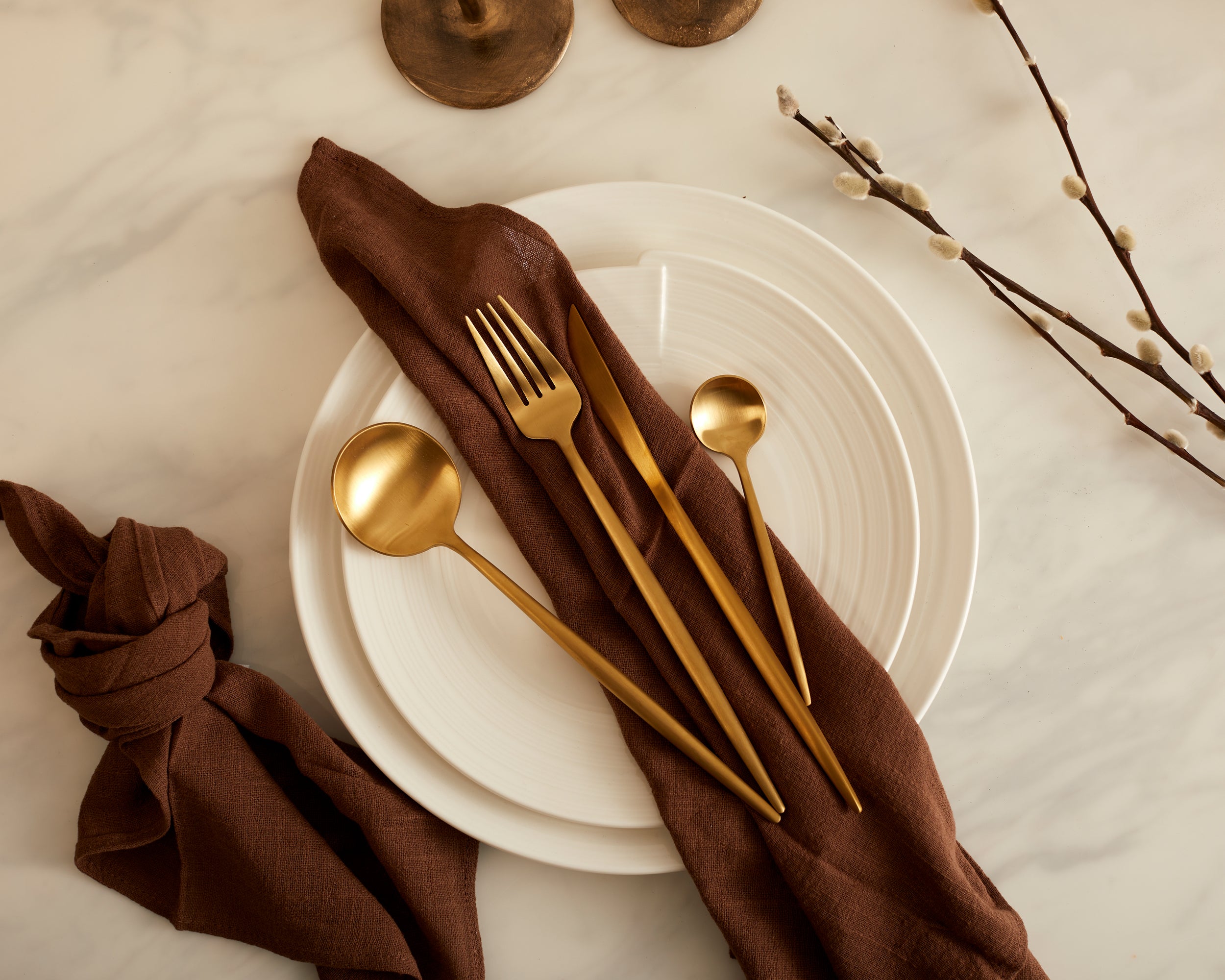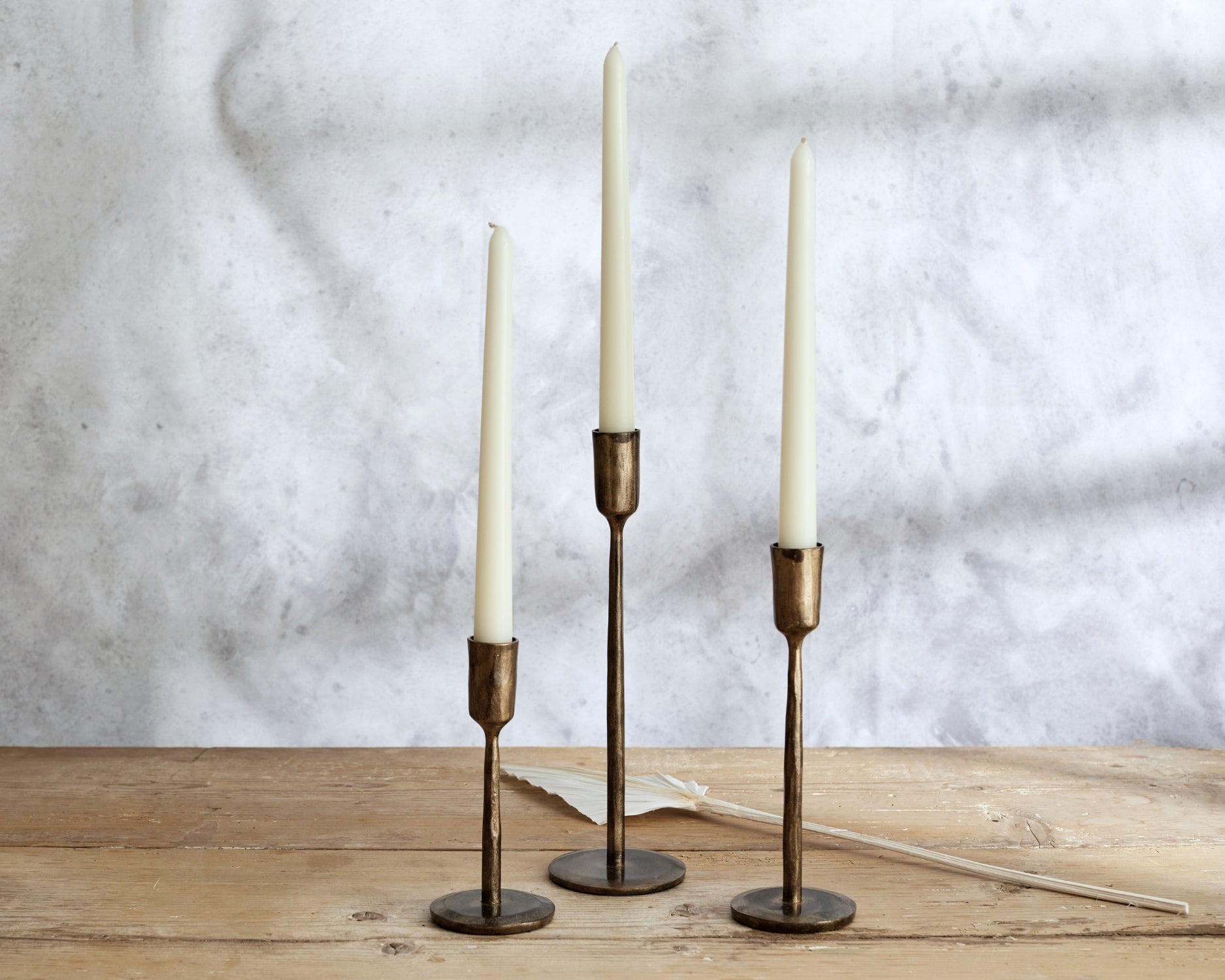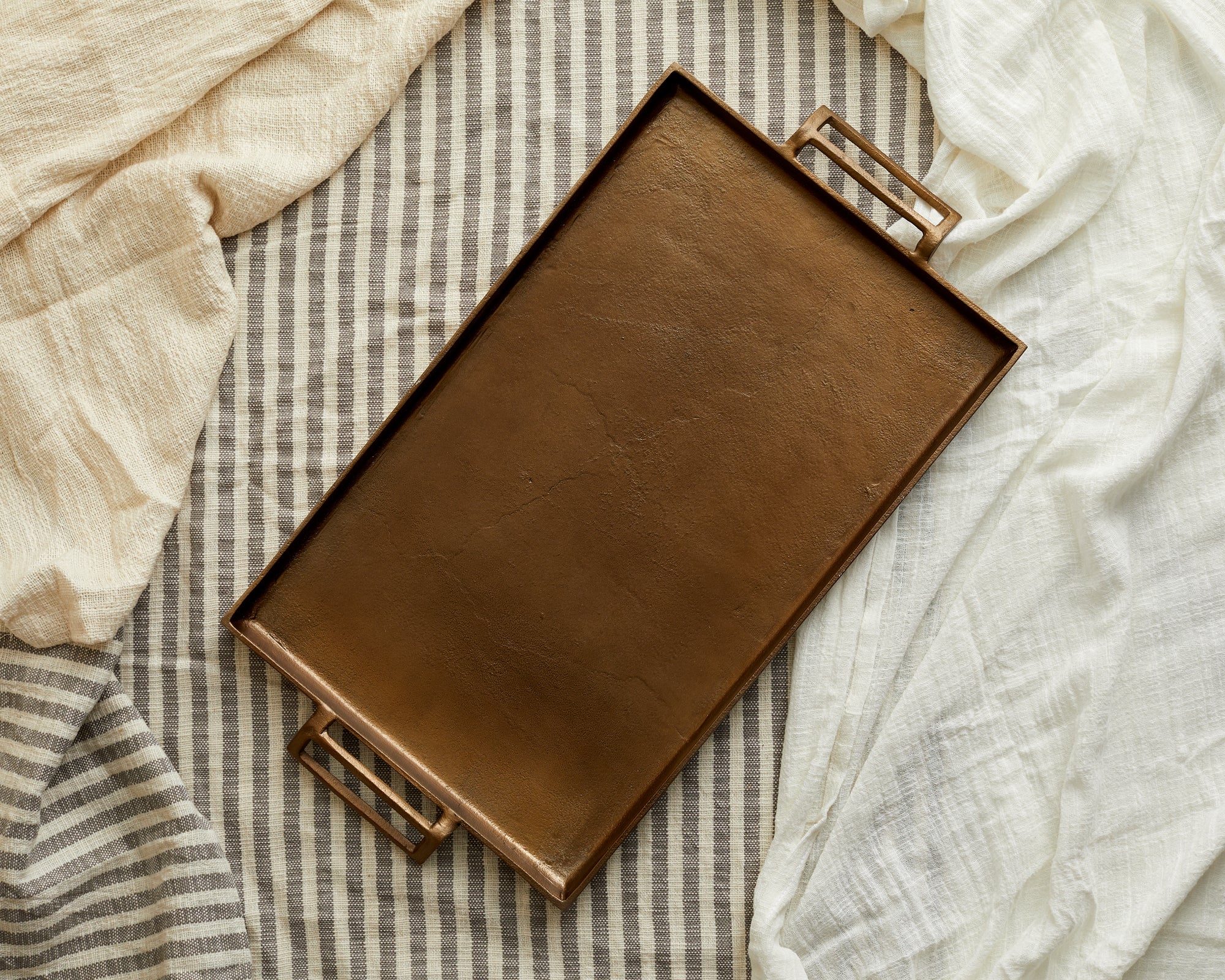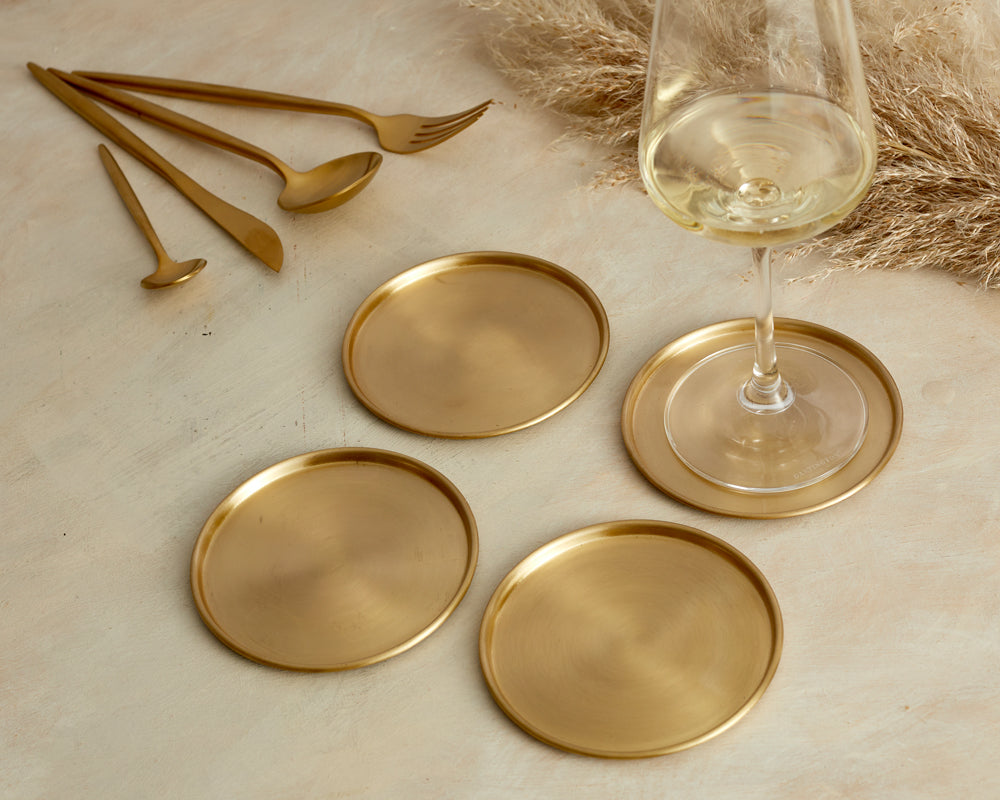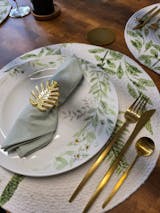In our previous posts we talked about how to choose table linens and placemats a practical option for anyone who wants an easy-to-clean and versatile foundation for their dining table. Today, we’re moving one step further into tablescape design and answering one of the most common questions: How do you choose the right dinnerware for your home?
When we talk about dinnerware sets, we mean everything from charger plates, starter plates, dinner plates, dessert plates, salad plates, bowls, and side plates; the essential pieces that bring a meal together. The number of pieces you need depends on your lifestyle, but the most basic sets usually include starter plates, dinner plates, and bowls. Thanks to modern trends, you no longer need to buy a large, expensive matching set. Instead, you can mix and match different materials, textures, and colors to create your own unique style without overspending. For those who prefer a ready-made option, we also offer curated tablescape sets to make designing your dining table effortless.
Before diving into types of materials, let’s clear up a common misconception. Most dinnerware collections you’ll find on the market, whether they’re labeled as stoneware, porcelain, or earthenware, are all technically ceramic plates. Ceramic simply refers to the art of shaping objects from baked clay, firing them at high heat, and often glazing or decorating them. The true differences in quality (and price) come from how the clay is blended, the firing temperature, and the finishing design. These factors give each type of ceramic dinnerware its distinct name, and that’s where things can get a little confusing.
Earthenware
Earthenware is usually the cheapest dinnerware we can find on the market and it is usually fired at around 999°C / 1140°C. It is baked clay that is varnished to give it a better finish and greater resistance. However, it is a porous material, of low hardness, high weight and that tends to scratch with the use of cutlery, so it is usually used on more informal occasions. According to its appearance, it is usually used on rustic table set ups, but unlike other tableware it is not as durable and tends to chip. Dishwasher and microwaves safe? Typically earthenware collections are dishwasher safe, but not all are microwave safe.
Stoneware
 Ceramic Salmon Round Dinner Plate
Ceramic Salmon Round Dinner Plate
Stoneware plates are made from clay at a higher temperature, between 1176°C / 1276°C. Because of the way it is fired the result is a thicker, stronger and more durable dinnerware. As well as earthenware they also look rustic and a little bit rough, but the main interesting feature of stoneware plates is the combination between its trendy opaque appearance and the resistance to different circumstances to which it will normally be exposed: food temperatures, blows, dishwasher cleaning, ovens and others. Even though it is more expensive than earthenware, stoneware will definitely be a better value for money if you are looking for something simple that lasts.
 Brown Ceramic Round Plate
Brown Ceramic Round Plate
Dishwasher and microwaves safe? As stoneware tends to be more porous than other ceramic dinnerware, it could absorb the water in the dishwasher, and this can make it more susceptible to cracking or breaking. Most stoneware plates are microwave safe.
This set is of course only complete when paired with quality cutlery, since your choice of knives, forks and spoons can elevate even the simplest plates. Sleek or rustic finishes in cutlery let you keep consistency with the overall style of your table.
And remember, the finishing touches, like napkin rings or coasters, can be just as impactful as the plates themselves. They not only add personality to the table but also help protect your surfaces and keep the setup practical.
Porcelain ware
 Florence Porcelain Plate
Florence Porcelain Plate
Porcelain plates are made from a more refined clay (feldspar, quartz and kaolin) and fired at much higher temperatures than earthenware or stoneware, approximately between 1200°C / 1450°C, resulting in a hard, white, non-porous pottery. Like we said: the higher the fire temperature is, the harder the crockery will be, which is why they stand out for their incredible resistance to high temperatures, keeping food warm, durability and colour conservation. Also it is considered as a very hygienic tableware, since it is a vitrified material that does not absorb odors or flavors.
 Josephine Porcelain Bowl
Josephine Porcelain Bowl
Technically it doesn't seem to be that different from stoneware, isn't it? But if you search for porcelain tableware you will find that in fact it is more expensive. Then why will you be paying more? Because porcelain plates are lighter in weight, thinner (but stronger at the same time) and have a more delicate appearance than rustic stoneware. Due to these characteristics, porcelain plates have become one of the best options for restaurant crockery, but also a lot of people choose this material for a domestic use giving its fancy style. Dishwasher and microwaves safe? Yes, unless they have metallic bands.
 Maeve Porcelain Dinner Plate
Maeve Porcelain Dinner Plate
Bone China and Fine China
When we talk about bone china, we are talking about the same materials with which porcelain tableware is made of, but with the addition of at least 25 percent of bone ash (literally cow bones combined with porcelain clay). This kind of dinnerware is fired at a slightly lower temperature than porcelain to produce a material that is even lighter, very delicate in feel, and with a unique translucent appearance. But, even though they seem to be “fragile”, bone china is the strongest and most durable ceramic dinnerware because of the addition of bone ash to its raw materials.
On the other hand, fine china has a similar production process but without the bone ash, which at the end of the day makes it closer to porcelain dinnerware. But don't forget that porcelain plates are fired at a much higher temperature resulting in a harder and more durable dinnerware. So if we need to summarise it: fine china is somewhere in the middle in terms of quality and price.
Value for money: If you ever looked for bone china, you might have realised that it tends to be way more expensive than fine china or porcelain plates. The reason why is because of the cow bone that gives a unique shade of colours and hues. Even though the bone ash makes it stronger, realistically you will be paying way more just for the appearance.
Dishwasher and microwaves safe? Yes, unless they have metallic bands.
Since porcelain and bone china often create a more refined tablescape, this is also where polished cutlery, elegant napkin rings, and minimalist coasters come into play to enhance that sophisticated look.
Summary
|
$ |
Durability |
Style |
Dishwasher |
Microwave |
|
|
Earthenware |
$ |
Porous material, of low hardness and high weight that tends to scratch with the use of cutlery. |
Rustic |
Yes |
No |
|
Stoneware |
$$ |
Thicker, stronger than earthenware. Resistance to different circumstances to which it will normally be exposed. |
Rustic |
No |
Yes |
|
Porcelain Ware |
$$$ |
Lighter in weight, thinner (but stronger than earthenware and stoneware). Incredible resistance to high temperatures, keeping food warm, durability and colour conservation. |
Delicate |
Yes |
Yes |
|
Fine China |
$$$ |
Somewhere in the middle between Porcelain ware and Bone China in terms of quality. |
Delicate |
Yes |
Yes |
|
Bone China |
$$$$ |
Bone china is the strongest and most durable ceramic dinnerware because of the addition of bone ash to its raw materials. |
Delicate. Translucent appearance. |
Yes |
Yes |
